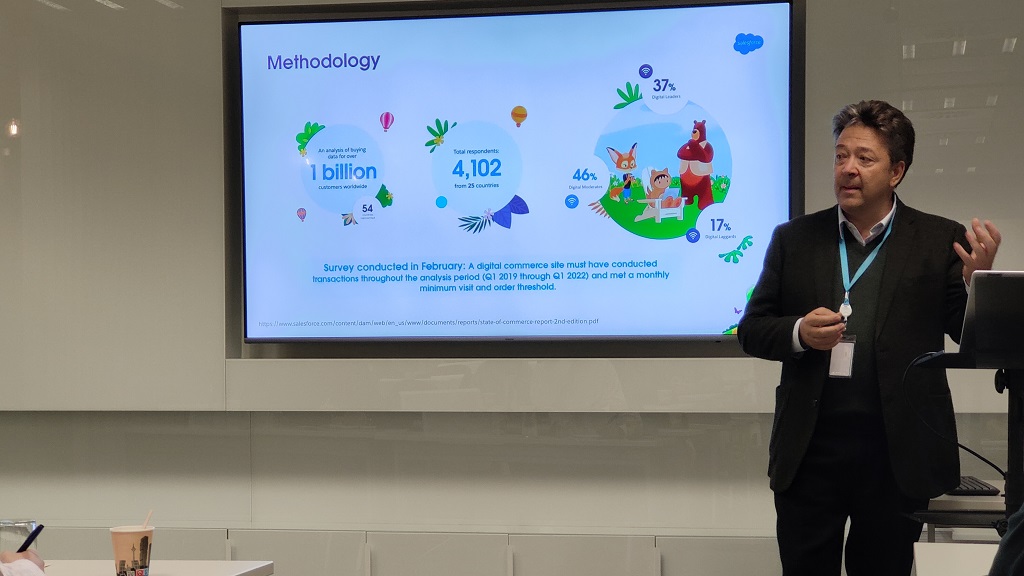
Yesterday we attended the presentation of the Salesforce study, State of Commerce, where they analyze the purchase data of more than 1,000 million customers from 54 countries. In addition, it places special emphasis on the methods used by companies to adapt to shopping habits that give more priority to online.
According to the study, digital sales channels are in full expansion. Worldwide, sales on the companies’ own website grew 44% between the first quarter of 2020 and the first quarter of 2022 in B2C companies, and 95% in B2B companies. But eCommerce websites are the tip of the iceberg as sellers rush to meet customer expectations. for new purchase options.
The Spanish professionals who have participated in the study expect 50% of their turnover to come from digital channels in the next two years. 69% of respondents indicate that they have invested in new digital channels in recent years, including mobile applications, marketplaces and social networks.
Demand grows in the online B2B market
The estimated share of digital channel revenue for B2B sellers is currently at 40%, while two years ago that share was 28% and is expected to grow to 52% in another two years. 57% of managers consider that digital channels will contribute more than half of the income in this type of business activity.
On the other hand, there has been a expansion of marketplaces: More than a third of B2B sellers (33% of those surveyed) indicate that the launch of their own marketplace (where they will not only sell their products, but also those of other companies) is a priority for the next few years.
With the economy driven by inflation – and third-party cookies depreciated – commerce organizations are focused on putting customer data to work to drive efficiency and profitability. For 48% of the Spanish professionals who participated in the study, automation will be a priority in the next two years.
The post-purchase experience is key to customer satisfaction
86% of consumers consider the experience to be as important as the products or services and the expectation is a consistent experience across customers. different points of contact with the company. When choosing between brands, 54% of business buyers and 51% of consumers prioritize convenience. Additionally, 51% of B2B shoppers say they use different options, like curbside pickup, more than a year ago, and 55% expect to use these options more in the next three years.
In addition, from Salesforce they believe in the integration of digital and physical commerce. Investment in e-commerce benefits the sales team; 47% of digital leaders indicate that sales teams act more as “advisors” to the sales process as a result.
Also, alternative payment methods are consolidated and a broad diversification of payment methods is expected for the coming years. Meanwhile, digital wallets and installment payment plans are seeing a big boost. 71% of the Spanish companies participating in the study accept at least one mobile payment option to make the purchase. Globally, 61% of digital leaders indicate that they already offer methods such as BNPL (Buy Now, Pay Later). PayPal represents 80% of payments when they are in the “mobile wallet” mode.
Lastly, we are seeing growth in Headless architecture. Companies that have this type of architecture, which allows front-end and back-end development to be separated, are more likely to expand into new channels (77%), compared to those that do not have this type of architecture (54 %).
“We are at a turning point in the development and maturation of electronic commerce throughout the world and in Spain”has explained Enrique Mazon, Vice President of Commerce Cloud at Salesforce Iberia. “After the strong expansion of recent years, the focus of sellers today is on getting to know the customer better with investments in a first party data strategy. Offering you a personalized and unified experience on all channels (physical and digital), digitizing the physical store and turning it into a distribution center, optimizing product supply processes, and complementing the assortment with third-party products/services is essential.”


